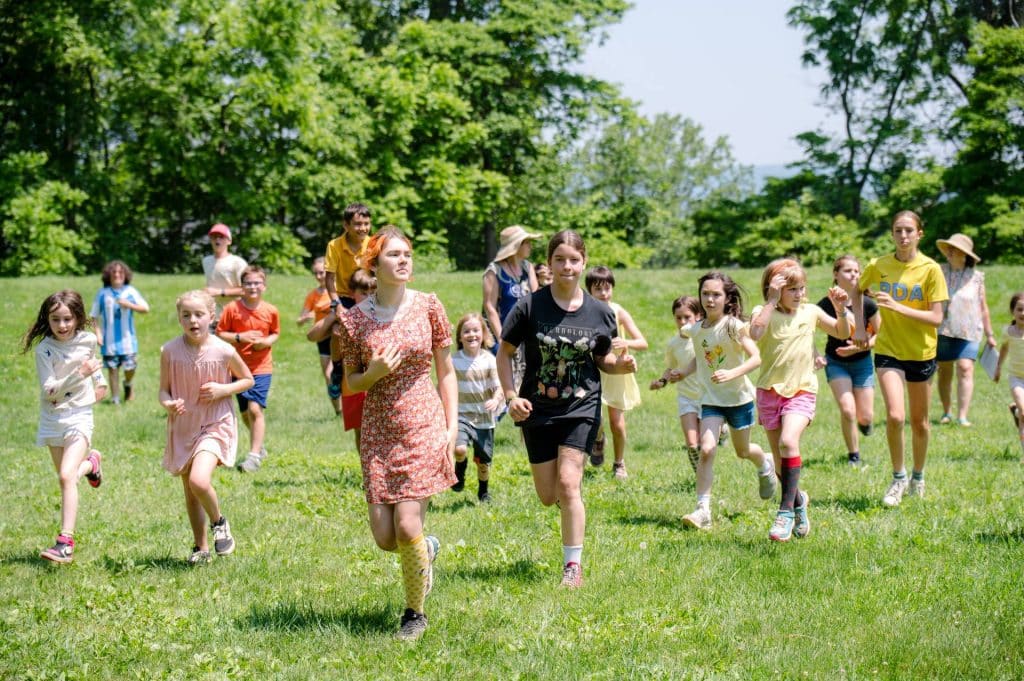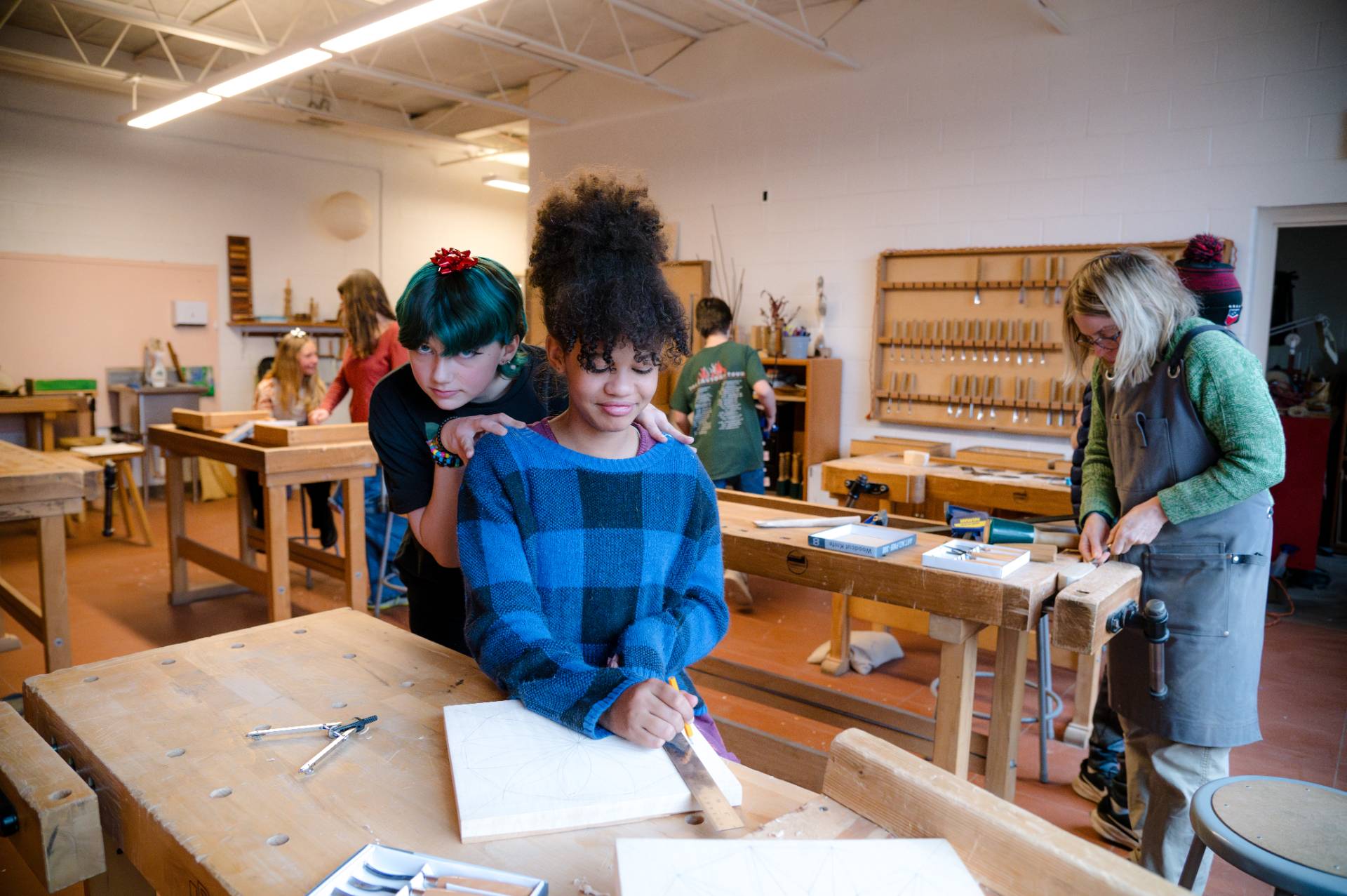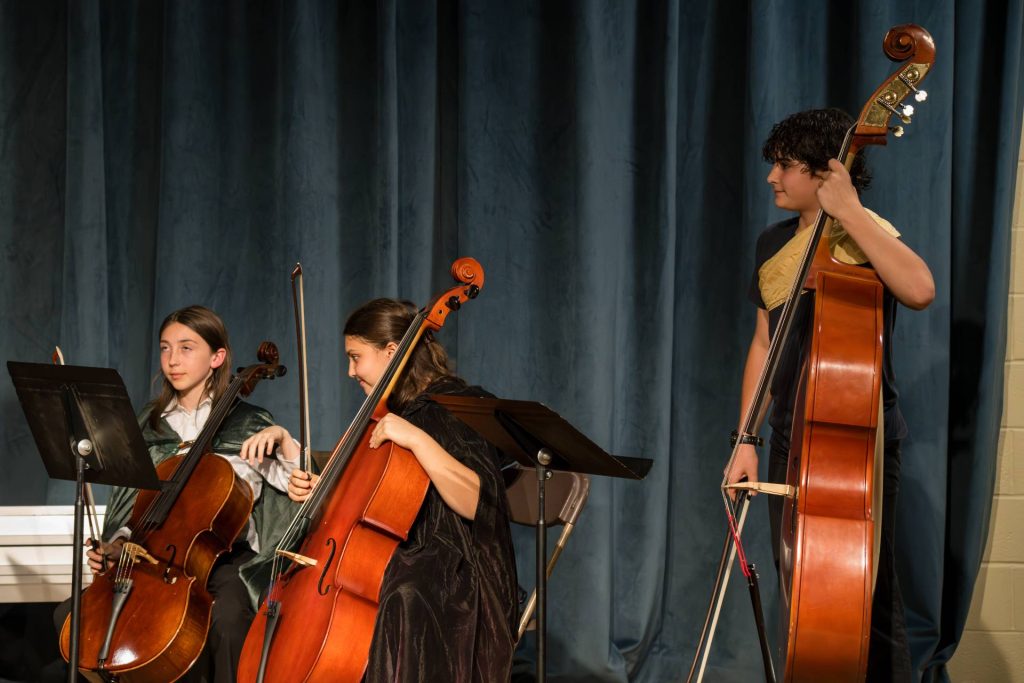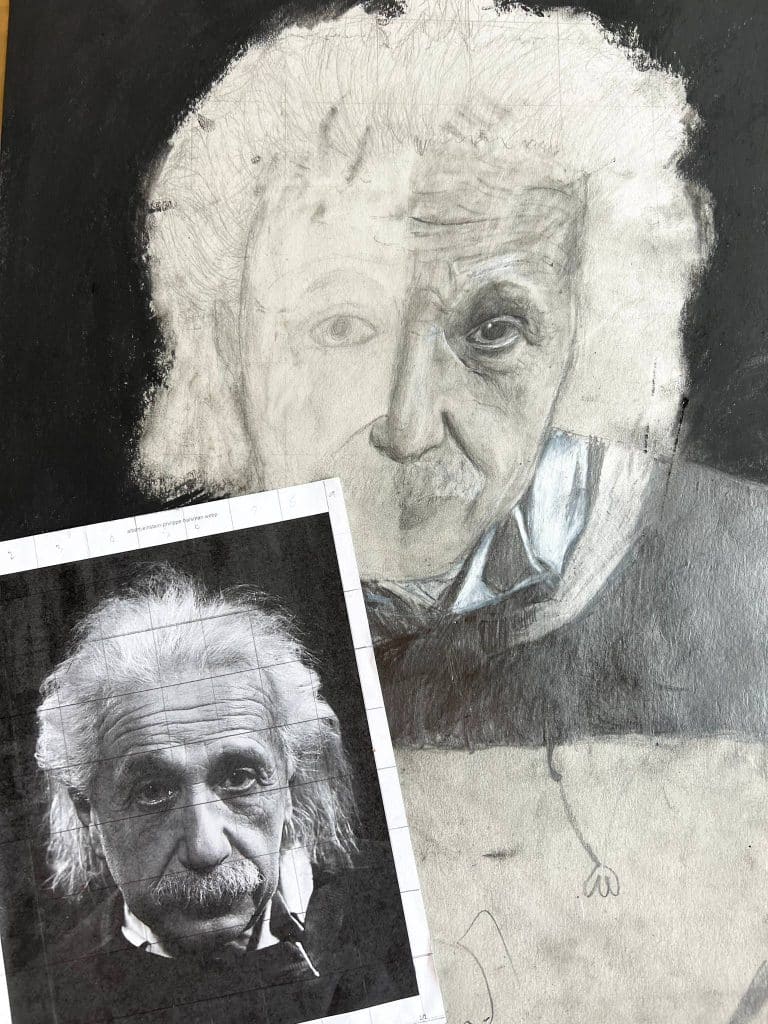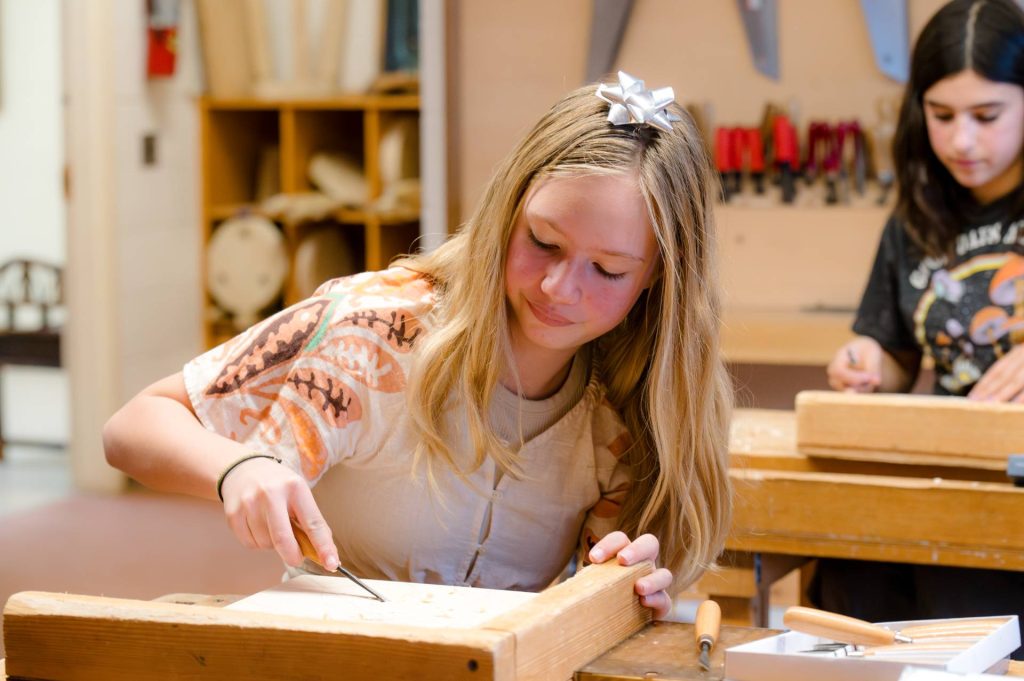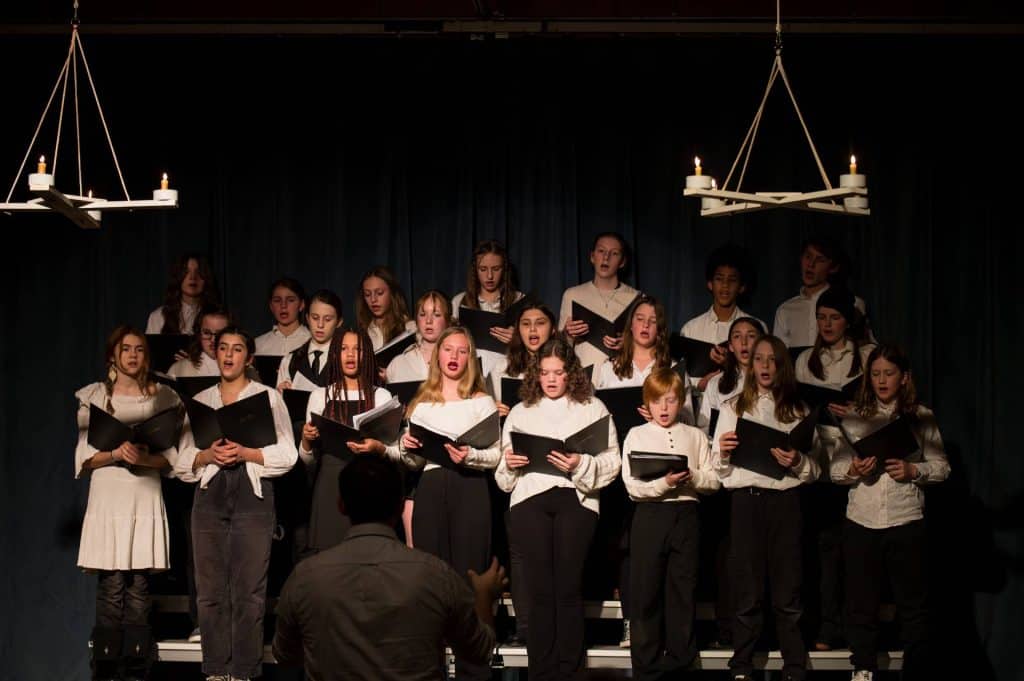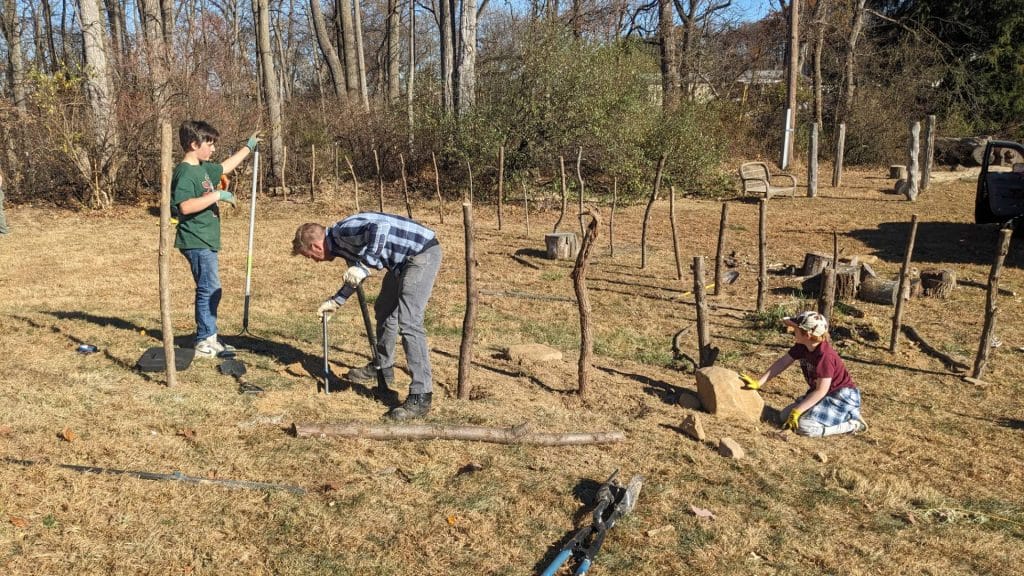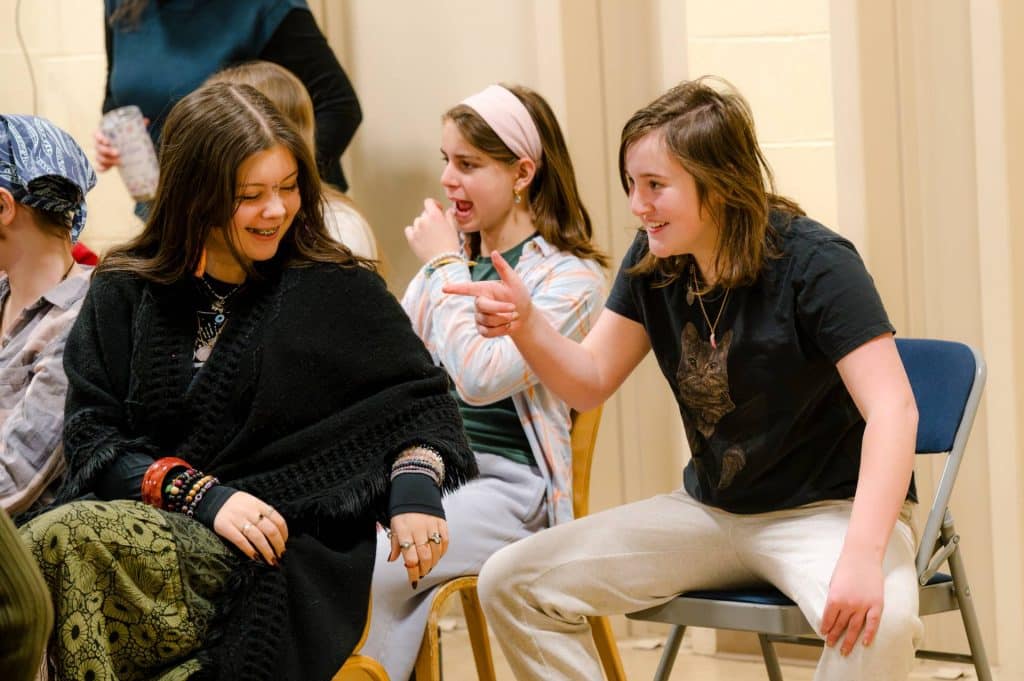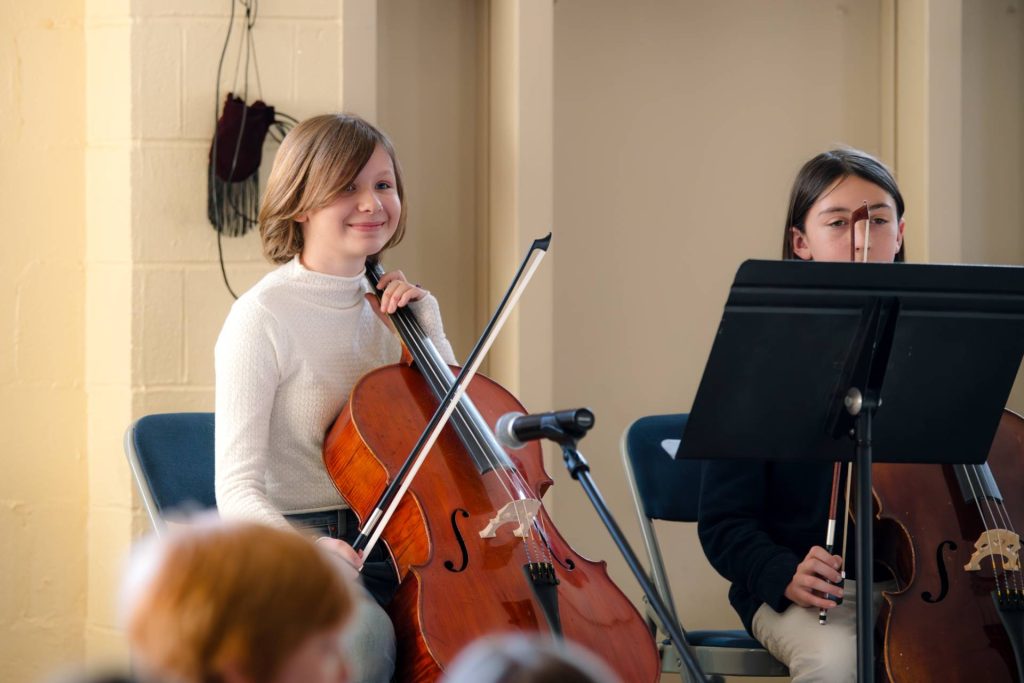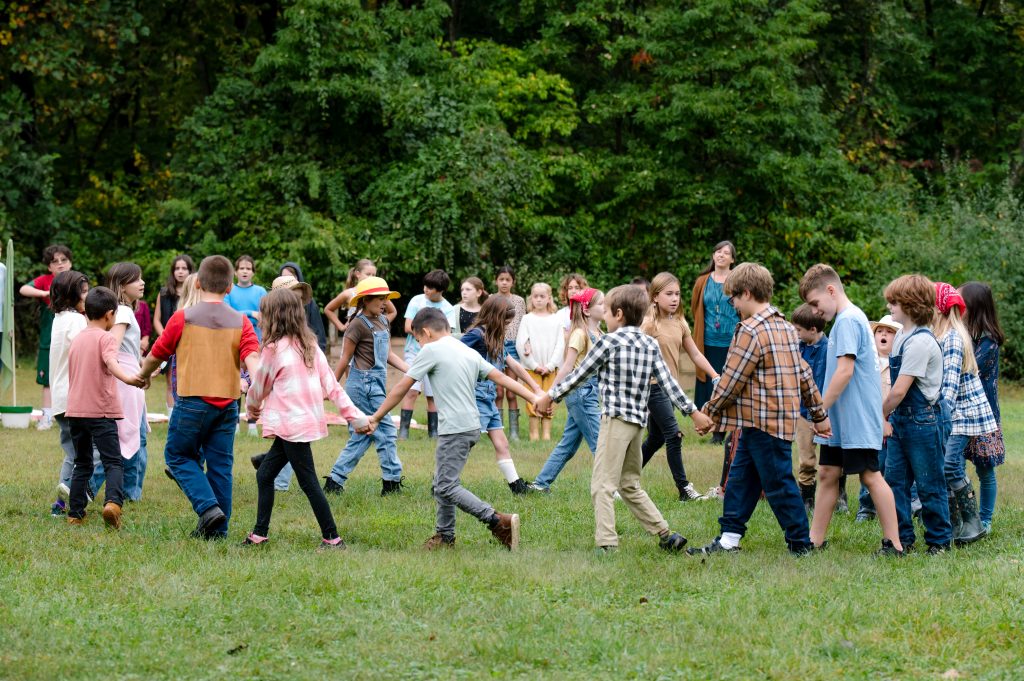Movement
Movement class guides students from playful locomotion to confident, lifelong athletics. In the early grades, obstacle courses, rhymes, and imaginative circle games hone skipping, jumping, and partner throwing while nurturing cooperation and joy in effort. Combined fourth‑ and fifth‑grade lessons balance non‑competitive tag games with first tastes of soccer, baseball, and Pentathlon events, anchoring skills in sportsmanship and positive language. By middle school purposeful play takes center stage: sixth graders master structured games like half‑court basketball and large‑team capture‑the‑flag; seventh and eighth graders refine tactics in flag football, badminton, ultimate frisbee, and Bothmer balance work, learning teamwork, role responsibility, and the habits that make active movement a lifelong pleasure.
